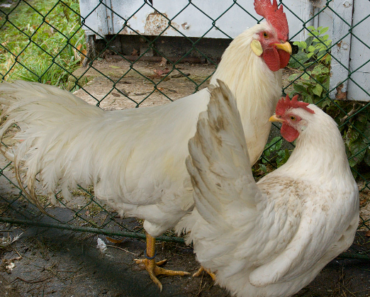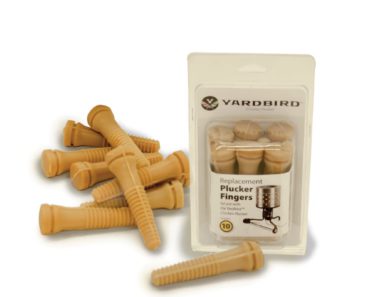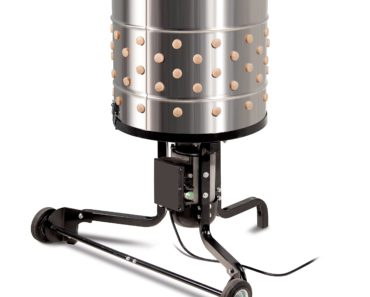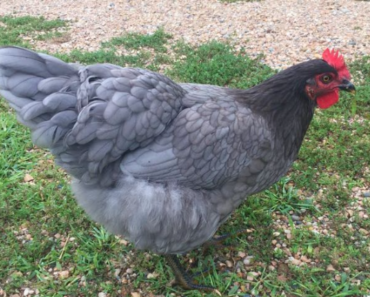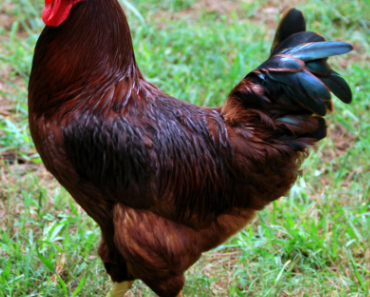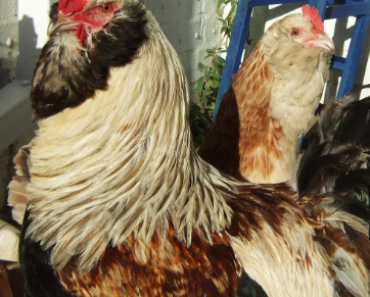Contents
- 1 The Ancona Chicken: A Unique and Versatile Breed in the World of Poultry
- 2 History and Origin
- 3 Physical Characteristics
- 4 Temperament and Egg Production
- 5 FAQ
- 5.1 What are the distinguishing characteristics of Ancona chickens compared to other chicken breeds?
- 5.2 How does the temperament of Ancona chickens affect their suitability for backyard chicken owners?
- 5.3 What are some common health issues or diseases that Ancona chickens may be prone to, and how can they be prevented or treated?
- 5.4 Related Posts
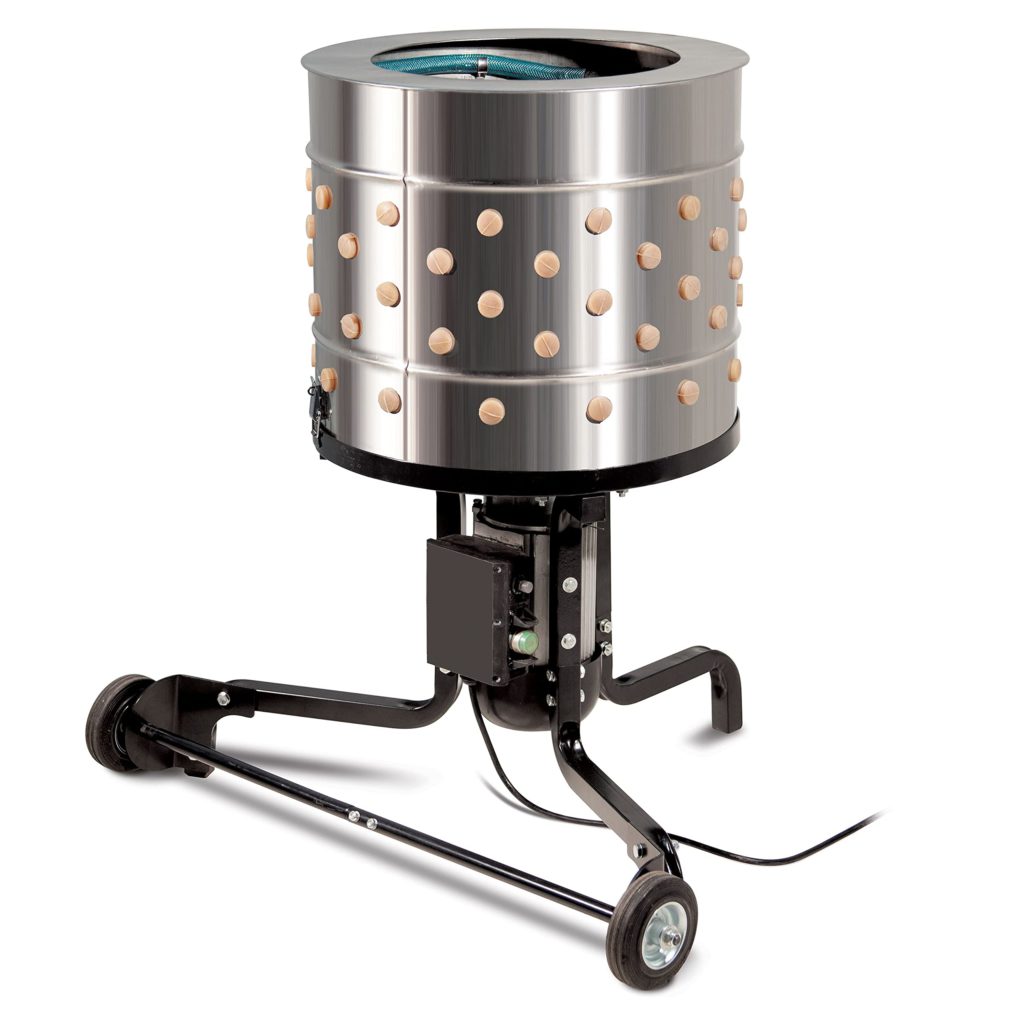
Welcome to my blog, dedicated to all things chicken! we will dive into the fascinating world of Ancona chickens. Known for their striking plumage and friendly temperament, these Italian beauties are a delight to have in your backyard flock. Join me as we explore the history, characteristics, and care tips for Ancona chickens. Let’s get clucking!
The Ancona Chicken: A Unique and Versatile Breed in the World of Poultry
The Ancona Chicken is a unique and versatile breed that has gained popularity in the world of poultry. This breed originated in Italy and is named after the port city of Ancona.
Anconas are known for their distinctive mottled plumage, which consists of black feathers with white tips. This attractive color pattern sets them apart from other chicken breeds, making them a favorite among chicken enthusiasts and breeders.
Not only are Ancona Chickens visually appealing, but they also have many desirable traits that make them a valuable addition to any flock. They are highly adaptable and resilient, able to thrive in various climates and environments. This makes them suitable for backyard flocks or commercial production settings.
Additionally, Anconas are excellent layers of medium-sized white eggs. They have a steady egg production rate, averaging around 200-300 eggs per year. This makes them a reliable choice for those who want a consistent supply of fresh eggs.
Another advantage of Ancona Chickens is their friendly and active temperament. They are known to be curious and sociable birds, often getting along well with both humans and other chickens. Their active nature also makes them great foragers, as they enjoy exploring their surroundings and finding their own food.
The Ancona Chicken is a distinctive and versatile breed that offers both aesthetic appeal and practical benefits. Whether you are looking for an attractive addition to your backyard flock or a productive egg-laying breed, the Ancona Chicken is definitely worth considering.
History and Origin
The Ancona chicken is a breed that originated in Italy, specifically in the coastal town of Ancona. This breed is believed to have been developed from the Black Leghorn breed, which was crossed with various other Mediterranean chicken breeds. The Ancona chicken was first imported to England in the late 19th century and later made its way to the United States. Today, it is recognized as a distinct breed by poultry organizations around the world.
Key points: Ancona chicken originated in Italy, developed from the Black Leghorn breed, imported to England and the United States.
Physical Characteristics
Ancona chickens are medium-sized birds with a slender and elegant build. They have a single comb, clean legs, and feather colors that vary between individuals. The most common color variety is black with white mottling, but there are also blue and chocolate varieties. Their feathers have a glossy sheen, giving them a striking appearance. Anconas have bright red wattles and earlobes, and their eyes are typically reddish bay.
Key points: Medium-sized breed, slender build, different feather color variations, glossy feathers, red wattles and earlobes.
Temperament and Egg Production
Ancona chickens are known for their active and energetic temperament. They are excellent foragers and tend to be quite independent. They adapt well to free-range environments but can also do well in confinement. As layers, Anconas are prolific and consistent. They are known to lay large white eggs, often exceeding 200 eggs per year. Their eggs are of good quality and have a reputation for excellent flavor.
Key points: Active and energetic temperament, good foragers, adaptable, prolific layers of large white eggs, excellent egg flavor.
FAQ
What are the distinguishing characteristics of Ancona chickens compared to other chicken breeds?
Ancona chickens are a distinct breed known for their unique feather pattern and active nature. Here are some distinguishing characteristics of Ancona chickens compared to other chicken breeds:
Feathering: Anconas have a speckled feather pattern that is referred to as “mottled.” This pattern consists of irregular black and white spots, giving them a distinct appearance. Their feathers are close-fitting and glossy.
Egg production: Anconas are excellent layers and known for their high egg production. They typically lay medium-sized white eggs, averaging around 200-280 eggs per year. Their consistent egg production makes them a popular choice among backyard chicken keepers.
Active behavior: Anconas are very active birds and enjoy free-ranging. They are excellent foragers and love to explore their surroundings. Due to their active nature, they require ample space and do well in a free-range or large enclosure environment.
Temperament: Ancona chickens are generally friendly and sociable. They can be quite curious and will readily interact with their owners. Some individuals may be more flighty compared to other breeds, but overall, they have a good temperament.
Hardiness: Anconas are known for their hardiness and adaptability to various climates. They can tolerate both hot and cold weather conditions. This hardiness makes them suitable for a wide range of environments.
Breed size: Ancona chickens are considered a medium-sized breed. Roosters usually weigh around 6-7 pounds (2.7-3.2 kg), while hens weigh around 4-5 pounds (1.8-2.3 kg).
Ancona chickens stand out with their mottled feather pattern, high egg production, active behavior, friendly temperament, hardiness, and medium-sized build. These characteristics make them a popular choice for backyard chicken enthusiasts.
How does the temperament of Ancona chickens affect their suitability for backyard chicken owners?
The temperament of Ancona chickens can greatly affect their suitability for backyard chicken owners. Ancona chickens are known to have a spirited and active temperament, which can make them more challenging to handle compared to other breeds.
However, their active nature also means they are highly energetic and excellent foragers, making them great free-range chickens. They enjoy exploring and scratching around for food, which can be beneficial for controlling pests in the backyard.
It is important to note that while Anconas are not aggressive towards humans, they can be skittish and wary of being handled. This may not make them the best choice for families with young children or those who want chickens that are easily tamed and enjoy being cuddled.
On the other hand, if you are an experienced chicken owner or have the patience to work with them, Anconas can become friendly and more comfortable with human interaction over time. They can be trained to tolerate handling and even enjoy gentle interactions.
Overall, the suitability of Ancona chickens for backyard chicken owners ultimately depends on the owner’s experience, preferences, and willingness to work with their temperament. If you are looking for high-energy chickens that can thrive in a free-range environment and are willing to invest time in building trust, Anconas can be a good choice.
What are some common health issues or diseases that Ancona chickens may be prone to, and how can they be prevented or treated?
Ancona chickens are generally healthy birds, but they can still be prone to a few common health issues. Here are some conditions to be aware of and how to prevent or treat them:
1. Respiratory infections: Ancona chickens can be susceptible to respiratory infections such as infectious bronchitis or mycoplasma. Good biosecurity practices, including quarantine for new birds, regularly cleaning and disinfecting the coop, and avoiding contact with sick birds, can help prevent these infections. If an infection does occur, treatment may involve antibiotics prescribed by a veterinarian.
2. Parasites: External parasites like mites and lice can infest Ancona chickens. Regularly inspecting the birds’ feathers and coop for signs of infestation, as well as implementing appropriate pest control measures such as dusting with diatomaceous earth or using poultry-friendly insecticides, can prevent and treat parasite problems.
3. Coccidiosis: Coccidiosis is a common intestinal disease caused by a protozoan parasite. Maintaining clean and dry living conditions, providing clean water sources, and administering coccidiosis prevention medication (such as medicated feed) can help prevent the disease. If coccidiosis is suspected, specific medications can be used to treat affected birds.
4. Egg-related issues: Some Ancona hens may experience reproductive problems, such as egg binding (when an egg gets stuck in the oviduct). To prevent this, ensure that hens have a balanced diet with adequate calcium for strong eggshells and good overall health. Additionally, providing enough nesting boxes and environmental enrichment can reduce the chances of egg-related issues.
5. Bacterial infections: Bacterial infections like Salmonella or E. coli can occur in any chicken breed, including Ancona. Maintaining proper hygiene, including regular handwashing, separating sick birds from the flock, and providing clean living conditions, can help prevent these infections. If an infection is suspected, consulting a veterinarian for appropriate treatment is crucial.
It’s important to note that prevention, proactive care, and promptly addressing any health concerns are vital in keeping Ancona chickens healthy. Regularly monitoring their behavior, appearance, and overall well-being will help detect any issues early on, ensuring prompt treatment and minimizing the impact on the flock’s health.
The Ancona chicken stands out as a remarkable breed in the world of chicken. With its stunning black and white speckled feathers and vibrant personality, this Mediterranean breed is an excellent addition to any flock. Not only is it visually appealing, but it also boasts qualities such as hardiness, adaptability, and high egg production. Whether you’re a backyard enthusiast or a professional farmer, the Ancona chicken can bring both beauty and utility to your poultry endeavors. Consider adding this versatile breed to your collection and enjoy the benefits it offers.

